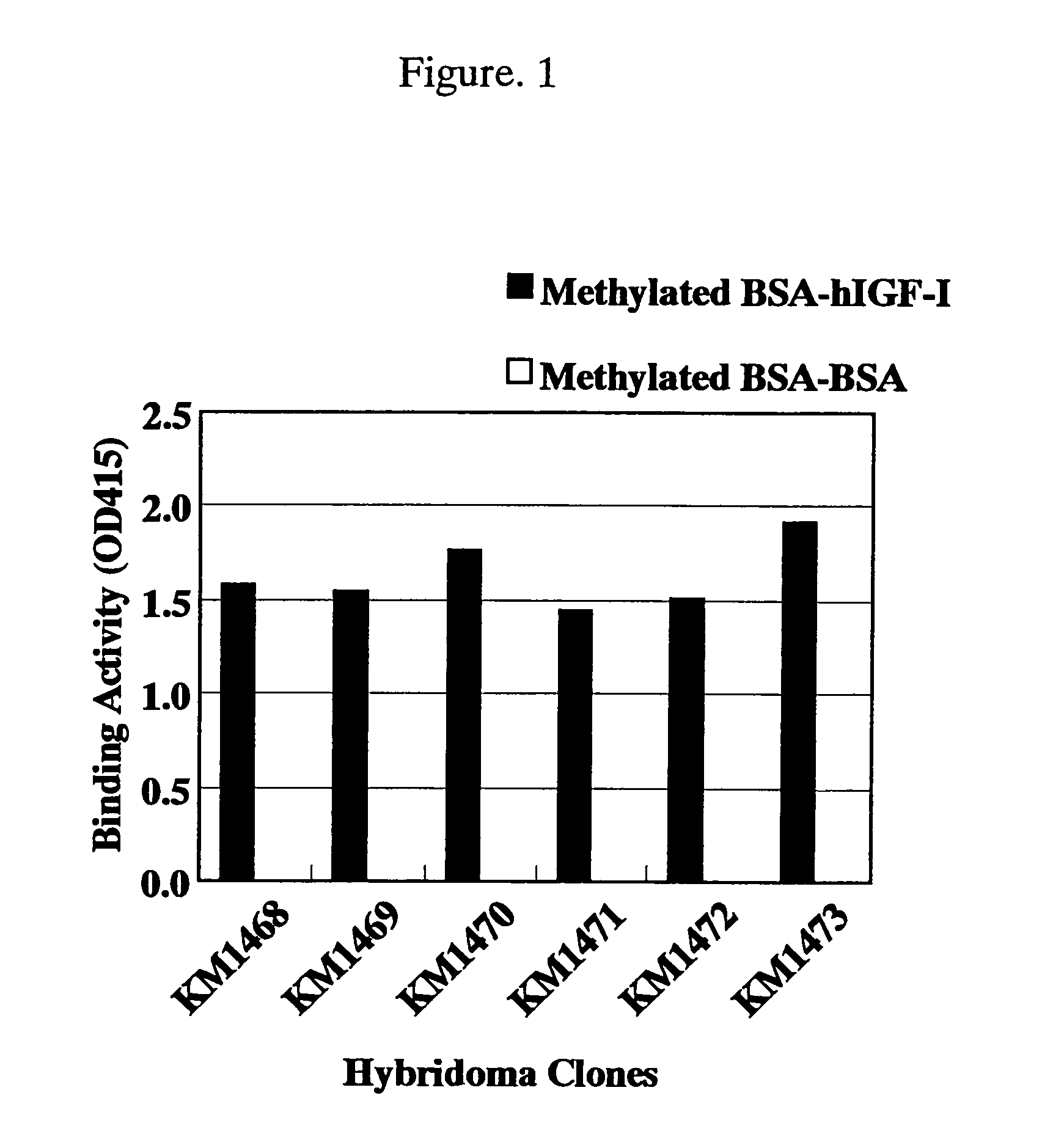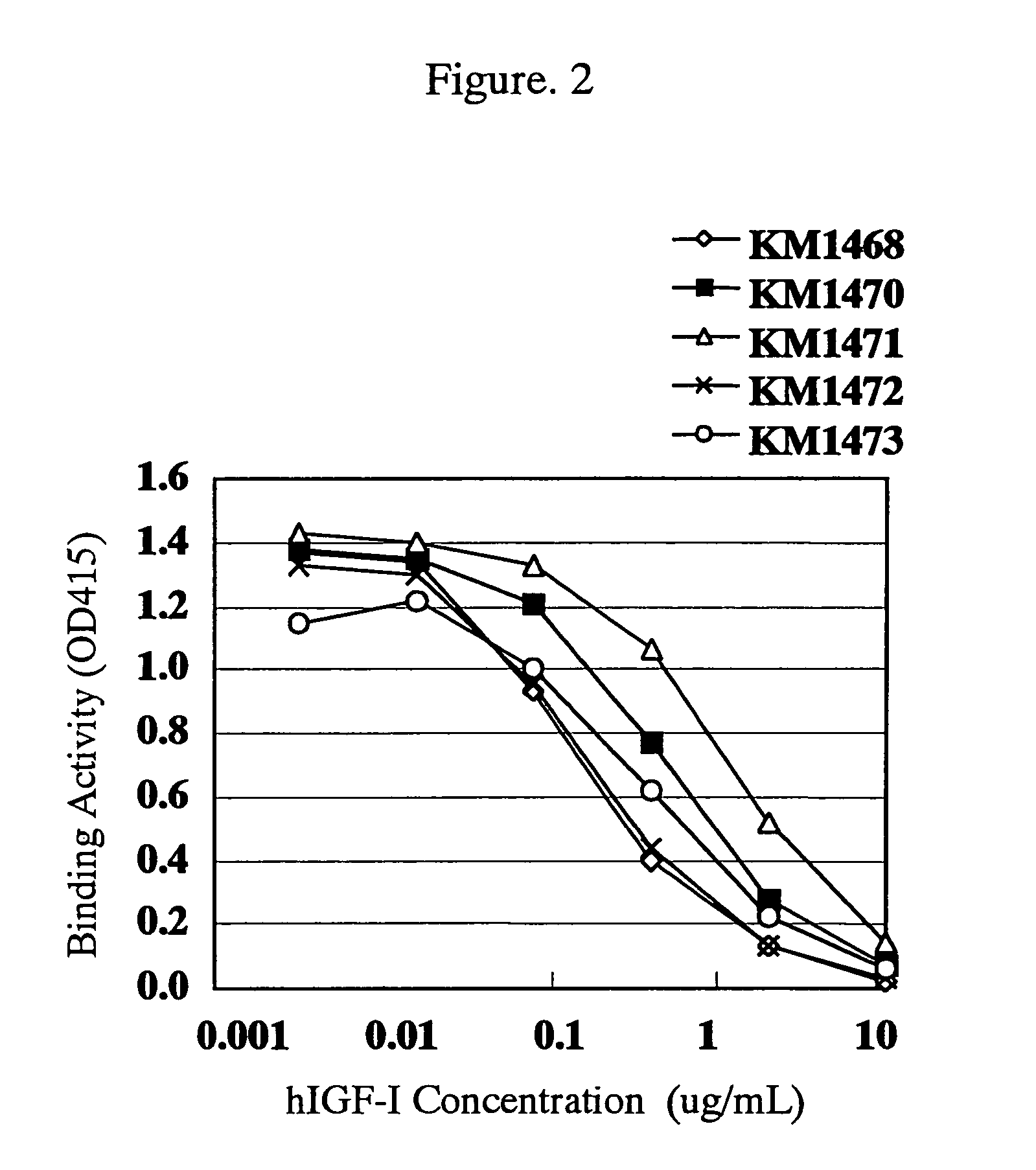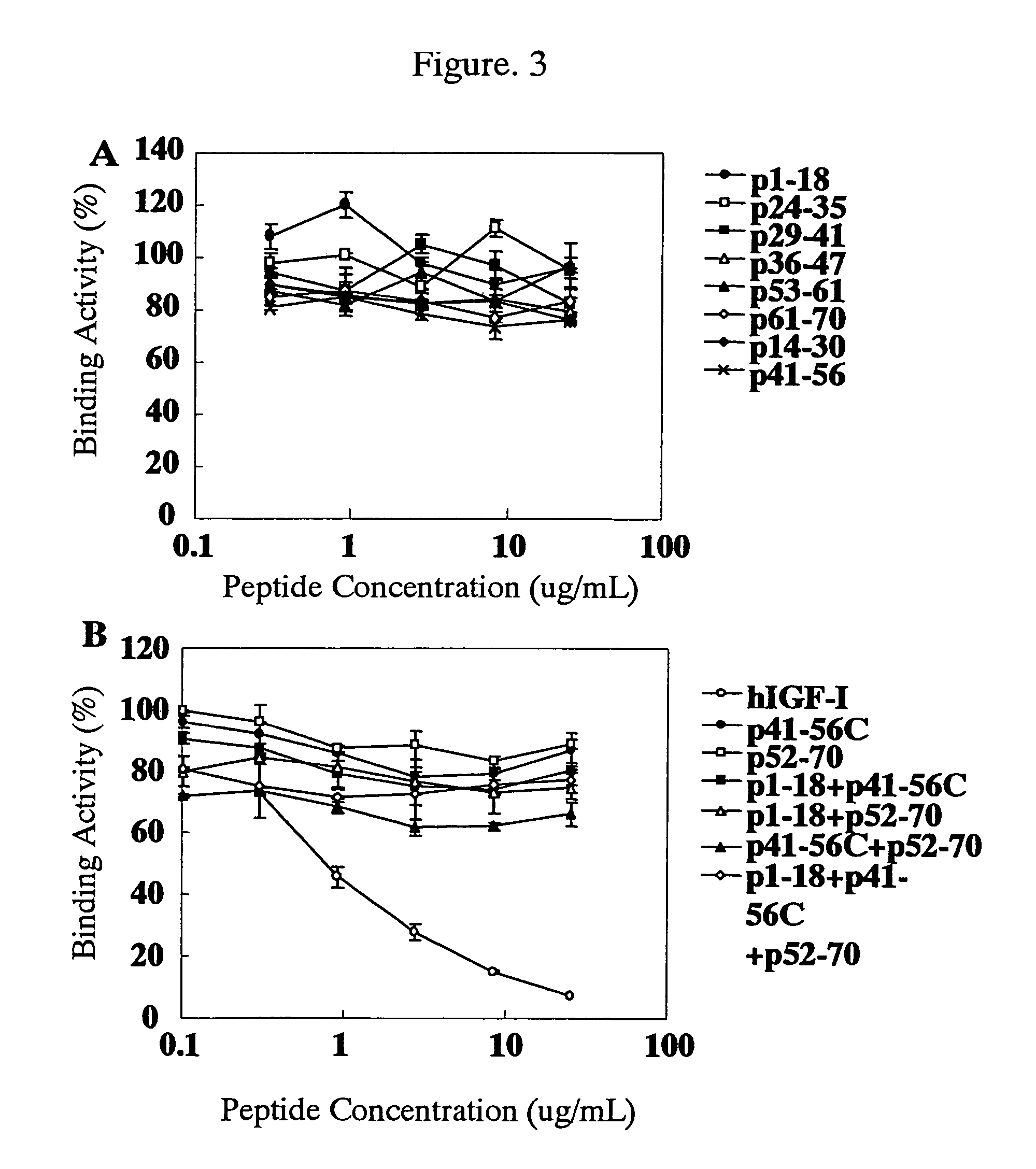Antibody against human insulin-like growth factor
a technology of growth factor and antigen, applied in the field of antigen to insulinlike growth factor, can solve the problems of difficult to completely suppress these diseases, no reports on the preparation of recombinant antibodies, and cancer risk, and achieve the effect of easy cloning
- Summary
- Abstract
- Description
- Claims
- Application Information
AI Technical Summary
Benefits of technology
Problems solved by technology
Method used
Image
Examples
example 1
Preparation of Antibody to hIGF-I
[0249](1) Immunization of Animal and Preparation of Antibody Producing Cell
[0250]A recombinant hIGF-I (manufactured by R & D) was conjugated with methylated BSA (manufactured by SIGMA) for the purpose of increasing its immunogenicity, and use as the immunogen. That is, the methylated BSA dissolved in redistilled water was mixed at a ratio of methylated BSA: hIGF-I=1:4 (weight ratio) at 4° C. and stirred for 10 seconds using a Vortex mixer. Thereafter, this was mixed with Freund's complete adjuvant or Freund's incomplete adjuvant at a volume ratio of 1:1 using a syringe equipped with connecting needles and used as the immunogen (hereinafter referred to as methylated BSA-hIGF-I adjuvant).
[0251]The methylated BSA-hIGF-I adjuvant prepared as described in the above using Freund's complete adjuvant (equivalent, to 100 μg of hIGF-I) was administered to an SD rat of 5-weeks-old, and the immunogen prepared in the same manner using Freund's incomplete adjuvant...
example 2
Examination of Reactivity of Anti-hIGF-I Rat Monoclonal Antibody
[0264](1) Reactivity to Natural Three-Dimensional Structure of hIGF-I
[0265]Reactivity of the anti-hIGF-I rat monoclonal antibodies selected in Example 1(3) with hIGF-I which maintains natural three-dimensional structure in a liquid phase system was examined by a competitive ELISA shown below.
[0266]Each of 5-fold serial dilutions of hIGF-I starting from 20 μg / ml was dispensed in 50 μg / well portions into the plate shown in Example 1(4) in which the methylated BSA-hIGF-I prepared in Example 1(1) had been immobilized, and then each of the solutions prepared by diluting purified antibodies of the anti-hIGF-I rat monoclonal antibodies (KM1468: 6.0 μg / ml, KM1470: 1.0 μg / ml, KM1471: 0.16 μg / ml, KM1472: 7.0 μg / ml, KM1473: 1.2 μg / ml) was dispensed in 50 μl / well portions, mixed and allowed to react at room temperature for 2 hours. After the reaction and subsequent washing with Tween-PBS, 4,000 times-diluted peroxidase-labeled rabb...
example 3
Verification of Reactivity of Anti-hIGF Antibody with IGF
[0280]Comparison of the reactivity of KM1468 and two commercially available anti-hIGF antibodies with antigens was carried out in the following manner. As the antibodies, the anti-hIGF antibody KM1468, sm1.2 as a commercially available anti-hIGF-I antibody (manufactured by Upstate Biotechnology) and S1F2 as a commercially available anti-hIGF-II antibody (manufactured by Upstate Biotechnology) were used. As the antigens, hIGF-I (manufactured by Pepro Tech), hIGF-II (manufactured by Pepro Tech) and human insulin (manufactured by Wako Pure Chemical Industries) were used.
[0281](1) Measurement of Binding Strength Using Surface Plasmon Resonance
[0282]In order to analyze binding activity of the anti-hIGF antibody KM1468 to an antigen hIGF-I or hIGF-II, binding strengths of the anti-hIGF antibody KM1468, a commercially available anti-hIGF-I antibody sm1.2 and a commercially available anti-hIGF-II antibody S1F2 to hIGF-I and hIGF-II we...
PUM
| Property | Measurement | Unit |
|---|---|---|
| binding constant | aaaaa | aaaaa |
| molecular weight | aaaaa | aaaaa |
| concentration | aaaaa | aaaaa |
Abstract
Description
Claims
Application Information
 Login to View More
Login to View More - R&D
- Intellectual Property
- Life Sciences
- Materials
- Tech Scout
- Unparalleled Data Quality
- Higher Quality Content
- 60% Fewer Hallucinations
Browse by: Latest US Patents, China's latest patents, Technical Efficacy Thesaurus, Application Domain, Technology Topic, Popular Technical Reports.
© 2025 PatSnap. All rights reserved.Legal|Privacy policy|Modern Slavery Act Transparency Statement|Sitemap|About US| Contact US: help@patsnap.com



